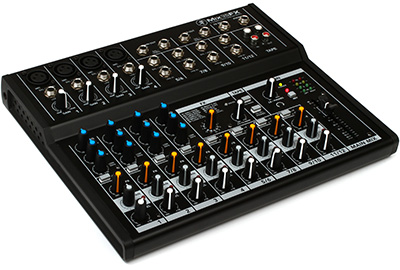

A gentle request or reminder, and maybe an X on the floor (with gaffer’s tape) can help the singer stay in position.įig. You don’t want to intimidate the singer or put a damper on his/her enthusiasm, but you also don’t want to end up with a fatally-flawed take of an otherwise great performance. If you do run into this issue, it needs to be handled delicately-this is where your studio savvy and that psychology degree your mother made you earn (you know, “as a fallback”) will come into play. A little rhythmic swaying will probably be fine, but a lot of english may turn out to be problematic (that could be partly why that famous singer from tip #1 insists on his favorite hand-held). One potential downside of having the vocalist maintain a little distance from the mic is that if he/she moves around too much in performance at that distance, you may be able to hear the vocal tone and ambient level change in the recording-an unwanted distraction, that may be difficult to fix later (especially if the mix is relatively dry). Don’t let the vocalist move around too much So the moral is, whenever you’ve got a choice, always let your ears be the ultimate guide.Ĥ. I remember one vocalist who just sounded too thin and edgy on that mic, but ended up sounding perfect-warmer and fuller-with a much more inexpensive condenser from a less-well-known brand (which cost about a tenth of the price of the Neumann!). I’ve used my U87 on the majority of vocal tracks I’ve recorded, but with some singers it can be a bit bright or harsh. Just because you have access to a Neumann U87 (or some other classic vocal condenser), doesn’t mean it’s automatically the best choice in every instance. That’s why, in bigger studios, you’ll often see engineers set up a forest of half a dozen mics around the vocalist and do a test recording to see which is better for that singer in that room on that day. While those criteria will get you an excellent mic for vocals-no question-the choice (when there is a choice) of a particular mic should always be governed by how it sounds with the particular vocalist you’re about to record. Don’t choose the mic strictly based on brand-name or $$$ costĭespite my recommendation above, you shouldn’t choose your (condenser) mic based solely on its pedigree-a well-respected brand name or a high price tag. That’s why most recordists use a studio-standard large-diaphragm condenser for vocals-not only do these mics have the desired open-ness, but their tonal balance is often optimized to help the vocal float effortlessly above the mix, with a minimum of fuss or EQ needed.Ģ. You can EQ for tone, but you can’t add clarity and air after the fact. While stage dynamics sound ok in a busy mix, if the vocal is more isolated, or accompanied (even in parts) by a more minimal arrangement (solo acoustic guitar or piano, for example), the dynamic’s lack of clarity and air (openness) will be a limitation, and their often-slightly nasal quality will be more apparent.

But despite this, the SM58 and its ilk won’t really provide the best sound quality for a studio recording, up against other carefully-recorded instrument tracks. And it’s probably true, at times-certainly many live mixes have vocal tracks that were taken in with this (or another equivalent) workhorse dynamic mic-I’ve mixed quite a few myself, and I thought they came out fine.
#Unity audio overload full
Now, recording lore is full of stories of how this-or-that famous singer always records with his trusty SM58 (the classic $99 hand-held standard club mic), and still manages to sound great.


 0 kommentar(er)
0 kommentar(er)
